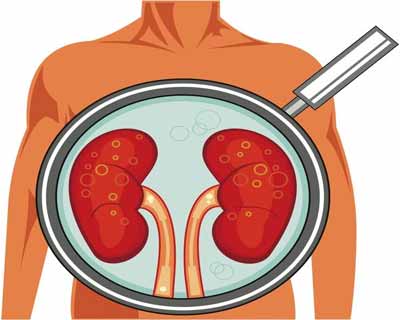- Home
- Editorial
- News
- Practice Guidelines
- Anesthesiology Guidelines
- Cancer Guidelines
- Cardiac Sciences Guidelines
- Critical Care Guidelines
- Dentistry Guidelines
- Dermatology Guidelines
- Diabetes and Endo Guidelines
- Diagnostics Guidelines
- ENT Guidelines
- Featured Practice Guidelines
- Gastroenterology Guidelines
- Geriatrics Guidelines
- Medicine Guidelines
- Nephrology Guidelines
- Neurosciences Guidelines
- Obs and Gynae Guidelines
- Ophthalmology Guidelines
- Orthopaedics Guidelines
- Paediatrics Guidelines
- Psychiatry Guidelines
- Pulmonology Guidelines
- Radiology Guidelines
- Surgery Guidelines
- Urology Guidelines
Kidney Damage Associated with Radiocontrast may be over estimated : JASN Study

A new analysis indicates that radiocontrast, which is commonly used during imaging tests, may be less hazardous to the kidneys than previously thought. Among nearly 6 million hospitalized patients, those who received radiocontrast did not develop acu...
Highlights
• A new analysis indicates that radiocontrast, which is commonly used during imaging tests, may be less hazardous to the kidneys than previously thought.
• Among nearly 6 million hospitalized patients, those who received radiocontrast did not develop acute kidney injury at a clinically significant higher rate than other patients.
Washington : A new analysis indicates that radiocontrast, which is commonly used during selected imaging tests may be less hazardous than previously thought. The findings, which appear in an upcoming issue of the Journal of the American Society of Nephrology (JASN), suggest that imaging studies that might help save or improve lives are being unnecessarily withheld from patients owing to exaggerated fears.
While radiocontrast sometimes referred to simply as “contrast” or “dye” is frequently used to enhance imaging with computed tomography scans or angiography, it can contribute to acute kidney injury (AKI). There is little agreement in the medical literature regarding the incidence of contrast-induced AKI, with published rates ranging from <1% to >30% of exposed patients.
To provide a more accurate estimate of the burden of AKI among patients receiving radiocontrast, Emilee Wilhelm-Leen, MD, Maria Montez-Rath, PhD, and Glenn Chertow, MD, MPH (Stanford University School of Medicine) analyzed 2009 information from the Nationwide Inpatient Sample, the largest publically available all-payer inpatient care database in the United States. After restricting the sample to hospitalizations for patients older than 18 years with lengths of stay ≤10 days, the investigators were left with 5,931,523 hospitalizations for analysis.
The researchers stratified patients according to the presence or absence of 12 relatively common diagnoses associated with AKI and evaluated rates of AKI between strata. They The American Society of Nephrology®, ASN®, Kidney Week®, CJASN®, JASN®, NephSAP®, and ASN Kidney News® are registered trademarks of ASN also created a model that controlled for patients’ health and comorbidities to estimate the risk of AKI associated with radiocontrast administration within each strata.
The team found that, in general, patients who received contrast did not develop AKI at a clinically significant higher rate than other patients. Patients who received radiocontrast developed AKI at a rate of 5.5%, compared with 5.6% of patients who did not receive radiocontrast. After controlling for patients’ health and comorbidities, radiocontrast administration was actually linked to a 7% lower likelihood of developing AKI.
“We show data suggesting that the risk of acute kidney injury related to radiocontrast administration has been overestimated, and we would like for physicians, including cardiologists, radiologists, and surgeons who frequently are faced with decisions regarding the use or non-use of radiocontrast-enhanced imagining studies, to take this information into account in their clinical decision-making,” said Dr. Chertow.

Disclaimer: This site is primarily intended for healthcare professionals. Any content/information on this website does not replace the advice of medical and/or health professionals and should not be construed as medical/diagnostic advice/endorsement or prescription. Use of this site is subject to our terms of use, privacy policy, advertisement policy. © 2020 Minerva Medical Treatment Pvt Ltd